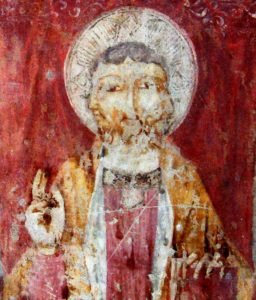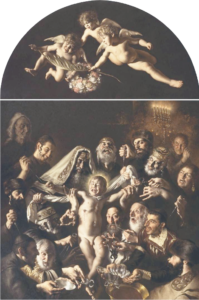The normie biographer Simms writes:
The ‘Gemlich’ letter, which is the first surviving longer political text by Hitler, defined the Jewish ‘problem’ partly as a medical issue. Hitler dubbed the Jews the ‘racial tuberculosis of the peoples’. Partly, the ‘problem’ was defined in political terms, with the Jews cast as the ‘driving forces of the revolution’, which had laid Germany low. Here he was referring not to the events of 1917 in Petrograd but to the workers’ and soldiers’ councils of 1918 in Germany.
The above quote seems to suggest that this young Hitler’s view of the Jews is identical to that of contemporary white nationalism. Since my approach is different, what can I reply? Let’s summarise my view.
Christianity fried the Aryan’s brains with the doctrine that ‘all are equal in the eyes of God’ (the New Testament message of the rabbis who wrote it for us Gentiles). Yesterday, when talking about some films and the subject of the French Revolution came up (and I suggest you watch Danton instead of the crap that Ridley Scott filmed), it reminded me that the secularisation of that Christian doctrine aggravated the matter. I mean that after the French Revolution, the psyche of the Aryan went from all are equal in the eyes of God to all are equal before the law (for new visitors, see what Tom Holland says in this featured PDF to understand the process of how it went from ‘in the eyes of God’ to ‘before the law’).
Following this secularised principle originally inspired by Christianity, France was the first European country to grant civil equality to Jews. Indeed, the legal position of Jews in France was widely envied by Jews in other countries. As a result of the so-called Jewish emancipation, and because of the high IQ of the Jew compared to the common Gentile, the first thing Jewry did, courtesy of Napoleon, was to take over the media in the 19th century. Otto Glagau, who led a journal, Der Kulturkämpfer, complained: ‘No longer can we suffer to see the Jews push themselves everywhere to the front, everywhere seize leadership and dominate public opinion’.

An 1806 French print of Napoleon empowering the Jews.
The secularisation of the Christian principle was catastrophic. Kevin MacDonald makes a point in the second book of his trilogy on Jewry when he says that Christendom defended itself against Jewish subversion based on the Christian myth. But that went into crisis, as the new God of the French Revolution still rules the scale of values in the West today. While it is true, as American southern nationalist Hunter Wallace has seen, that modernity uncovered Pandora’s box, neither Wallace nor MacDonald has the meta-perspective of Tom Holland (cf. the PDF linked above).
The Christian Question (CQ) is not to be underestimated. Before modernity, when the Inquisition ruled and 16th-century Spain was wiser about the Jewish Question (JQ) than 19th-century Europe, Iberian whites committed ethno-suicide in the Americas by intermarrying with Amerinds. This historical fact is nothing less than a ‘checkmate’ to the Judeo-reductionism of the typical white nationalist. And even forgetting the miscegenation perpetrated by the Spanish and Portuguese and focusing on the history of Austria and Germany, it’s clear that Christianity is responsible for the empowerment of Jewry.
For example, many pan-Germanists were imprisoned in the late 1880s and early 1890s, and the League Against Anti-Semitism was founded in 1891 by a pacifist who was eventually awarded the Nobel Prize, Bertha von Suttner.
This wanker attracted a wide membership, mostly members of the educated and Gentile bourgeoisie and even aristocrats who were so scandalised by pan-Germanism that they denounced it as ‘the narrow beer-hall politics of the unshaven’. Quite a few Protestant clergymen and Catholic intellectuals subscribed to the League Against Anti-Semitism. As devout Christians, Bertha von Suttner and her husband Arthur founded the League in response to the growing ‘anti-Semitism’ across Europe (cf. Otto Glagau’s quote above). So this cancellation of the healthy mind represented by 19th-century pan-Germanism also came from Christians and their Christian principles of equality. That’s why, addressing today’s nationalists, Robert Morgan recently said: ‘These ignorant imbeciles complain endlessly about Jews, but who let the Jews into white society?’
In the next entry we will see that even this very young Hitler, before he became aware of the CQ, was much more mature than the white nationalists of today in that he saw that the JQ was interwoven with the most bestial of Anglo-American capitalism.







